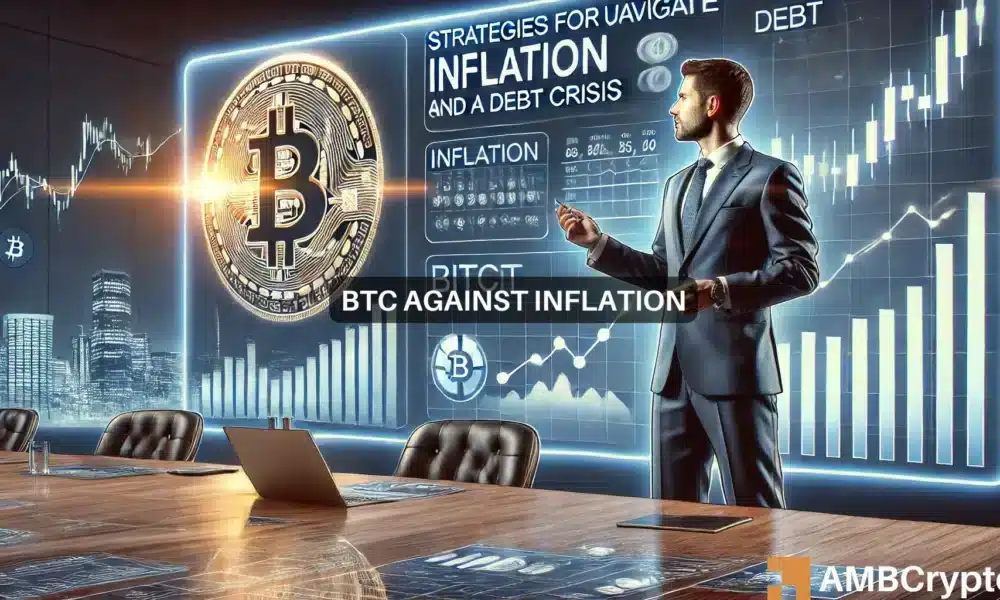The Appeal of Bitcoin as an Inflation Hedge Explained by Hedge Fund Manager
During a recent appearance on CNBC’s Squawk Box, Paul Tudor Jones, a billionaire hedge fund manager, detailed his approach to managing inflation.
He emphasized his interest in assets such as gold, Bitcoin, commodities, and Nasdaq tech stocks while avoiding fixed-income investments. Jones mentioned,
“I have investments in gold and Bitcoin.”
He elaborated on how his investment strategy is structured to capitalize on trends of inflation, citing examples from countries like Japan where inflation surpasses interest rates.
Comparing Gold and Bitcoin Performance
It is noteworthy that both gold and Bitcoin have demonstrated significant growth this year, reinforcing their roles as inflation-hedging instruments. Gold achieved a record high of over $2,750 per ounce on October 23.
This surge was influenced by factors such as the upcoming U.S. elections, tensions in the Middle East, and expectations of further monetary policy easing. Business Insider reports a 33% increase in the value of gold this year.
On the other hand, Bitcoin has also seen remarkable gains over the last year. CoinMarketCap data indicates a growth rate of over 117%. As of now, Bitcoin is only 9.8% shy of its peak value in March.
Linking Stock Market Performance to Inflation
Jones’ remarks spurred discussions within the Bitcoin community, where supporters often advocate for the cryptocurrency as a hedge against inflation.
Anthony Pompliano, the CEO of Professional Capital Management, echoed Jones’ insights about younger investors turning to the Nasdaq as an inflation buffer, deviating from conventional investments.
He also added his observation by stating,
“Finally, we can acknowledge that the stock market gains are a result of currency devaluation.”
This perspective suggests that the rise in stock prices may not solely be attributed to genuine market growth.
Evaluating the U.S. Economic Landscape
Addressing the mounting national debt in the United States, Jones highlighted a significant increase from 40% to 100% of GDP over the past 25 years, now reaching $35.7 trillion.
In line with J.P. Morgan’s September CPI report, consumer prices rose by 0.2% on a monthly basis and 2.4% year-over-year. The latest data reflected a slight drop from the 2.5% annual increase noted in August, indicating progress towards the 2% target set by the FED.
Furthermore, insights from the Federal Reserve Bank of New York indicated that U.S. consumers anticipate an average inflation rate of around 3% over the upcoming 12 months.
Jones suggested that one way for a nation to manage high debt levels is by employing inflation as a solution. This strategy involves maintaining interest rates below inflation levels and levying minimal taxes on consumers. The combination of nominal growth exceeding inflation can aid in reducing the debt-to-GDP ratio gradually.
Given the ongoing inflation challenges, Jones’ diversified investment approach encompassing both traditional and digital assets continues to draw interest, reflecting investors’ strategies for navigating economic uncertainties.

